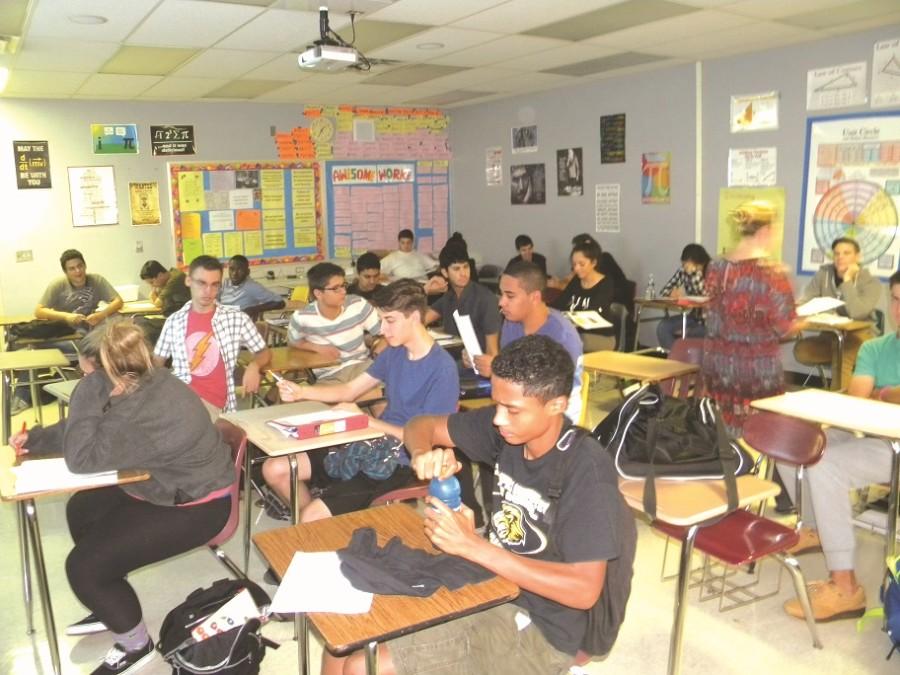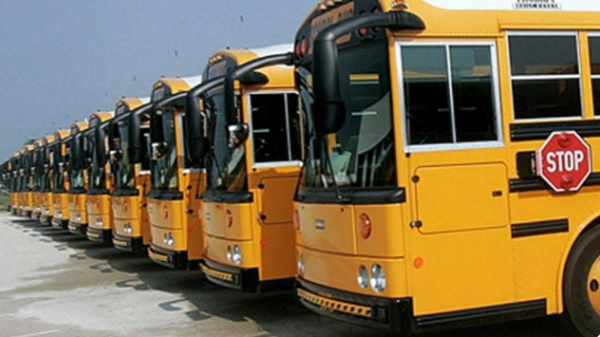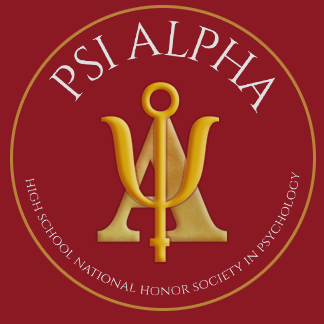Olympic Heights Among PBC’s Academic Elite Despite Being Among the Most Diverse
Ms. Kristen Markevich’s seventh period Pre-Calculus Honors class exemplifies the ethnic and socioeconomic diversity, yet high-achieving population of Olympic Heights.
The 2014-2015 school year was a great success for Olympic Heights with accolades such as stellar Advanced Placement test scores, maintenance of “A” school status and the growing popularity of the Olympians Advanced Placement Academy. In the wake of such accomplishments, it may be easy to overlook some of the difficulties that the high school has had to overcome.
OH certainly prides itself on its unique level of diversity; however, that diversity presents itself as an obstacle for meeting certain standards like pass rates for the FCAT, FSA, and End of Course (EOC) assessments. OH has a significant population of students who need help in meeting essential academic criteria. For instance, 41% of OH students receive free and reduced lunch, a primary indicator of poverty in school, which is typically a hindrance to academic achievement.
Additionally, OH’s English Language Learners (ELL) programs include 8% of the students, and Exceptional Student Education (ESE) programs, which cater to students with physical and intellectual disabilities, autism spectrum disorder and other specific situations, comprise 15% of the students.
All of these statistics together would usually indicate that a school would not be able to demonstrate considerable academic proficiency, yet OH has consistently performed with the top academically performing schools in the county the past few years.
In comparison with the 23 other public high schools in the school district, Olympic Heights ranks sixth in terms of 2015 EOC results, tied with West Boca Raton Community High School. It should be noted that of all the five schools that out-performed OH none have a larger percentage of students receiving free and reduced lunch, ELL or ESE services.
In addition to test scores, the community perception of OH has also been an impediment for the school. “When I first got here,” principal Dave Clark explains, “[OH] had a very poor reputation and people didn’t want to send their kids here, and now we’re having to turn kids away.”
Despite the odds, OH continues to excel. “We’re really shooting to be one of the top four or five schools in the entire district, and we’re close,” asserts Clark. “We’re knocking on the door.”
Clark explains that the key to continue OH’s winning streak is to present the top achieving students with more opportunity and provide the lower-achieving students with more support.
The Advanced Placement program is an area in which OH continues to excel. Ten of the OH AP classes had AP test pass rates that topped both the state and national average. Some of those classes, including English Language, Spanish Language, Human Geography, World History, and European History, had pass rates that were among the highest in the nation.
AP World History and AP European History teacher Ms. Renee Manwaring saw significant pass rate increases for not just one, but both of her classes. Her AP World pass rate increased from a 57% to an 80%, and her AP Euro pass rate soared off the charts as well, from a 75% to a 93%.
Manwaring explains, “I’m so proud of my students’ work ethics and dedication because it’s their pass rate, not mine!”
Ninety percent of those who took both classes simultaneously, “double dipping” as Manwaring calls it, passed both exams. Junior Nicole Moulia, who received 5s on both tests, explains that taking both classes “[gets] most of the information seared into your mind twice,” and that she would definitely recommend it to other students.
Other AP classes that saw improvement in their pass rates include: U.S. History, Art History, Psychology, U.S. Government and Politics, Chemistry, and Environmental Science.
In the coming years, OH plans to expand the selection of college-level courses offered to include more AICE classes as well as Dual Enrollment classes offered on campus. Currently, OH offers the largest array of Advanced Placement courses, so these new additions will only put the school farther ahead.
As far as struggling students, the school will continue credit-recovery programs and content-related reading (CRR) programs to enrich established curriculum and help students solidify the knowledge gained in class.
The horizon looks promising for OH. Though the school continues to face legitimate challenges, it will continue to provide students of all backgrounds with the opportunity for a well-rounded education.






